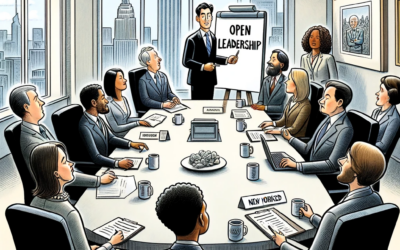In building a training program for leaders, I’ve given a lot of thought to definitions of leadership. Here are a few that I have come across:
“A leader is simply one who has followers.”To have followers isn’t much of a threshold. Cults have followers, and so do NFL teams and pop stars. Leaders should aspire to greater heights.
“A leader gets others to do what one cannot do alone.” This definition feels too utilitarian. The task is paramount, at the expense perhaps of learning and development.
“A leader gets people to do what he or she wants them to do, but having them want to do it.” This definition comes closer to what exceptional leaders do than the previous two, but the word “gets” implies manipulation. The rewards and opportunities are likely greater for coworkers in this context, but there’s no indication that inspiration or vision will be properly valued.
Leaders ought to strive to build a legion of thinkers, not automatons. John Searle’s Chinese Room experiment helps to illustrate why:
“Searle requests that his reader imagine that, many years from now, people have constructed a computer that behaves as if it understands Chinese. It takes Chinese characters as input and, using a computer program, produces other Chinese characters, which it presents as output. Suppose, says Searle, that this computer performs its task so convincingly that it comfortably passes the Turing Test: it convinces a human Chinese speaker that the program is itself a human Chinese speaker. All of the questions that the human asks it receives appropriate responses, such that the Chinese speaker is convinced that he or she is talking to another Chinese-speaking human being. Most proponents of artificial intelligence would draw the conclusion that the computer understands Chinese, just as the Chinese-speaking human does.
Searle then asks the reader to suppose that he is in a room in which he receives Chinese characters, consults a book containing an English version of the aforementioned computer program and processes the Chinese characters according to its instructions. He does not understand a word of Chinese; he simply manipulates what, to him, are meaningless symbols, using the book and whatever other equipment, like paper, pencils, erasers and filing cabinets, is available to him. After manipulating the symbols, he responds to a given Chinese question in the same language. As the computer passed the Turing Test this way, it is fair, says Searle, to deduce that he has done so, too, simply by running the program manually.
This lack of understanding, according to Searle, proves that computers do not understand Chinese either, because they are in the same position as he–nothing but mindless manipulators of symbols: they do not have conscious mental states like an ‘understanding’ of what they are saying, so they cannot fairly and properly be said to have minds.” (Searle 1980, p. 2-3)
As a leader, do you want “mindless manipulators of symbols” for coworkers? If you script your coworkers’ behavior, that’s what you are likely to get. They won’t be inspired or feel authorized to employ their own vision or creativity. They may not even understand what it is they are trying to achieve, or how they fit into your vision.
Members of Generation Y want to understand and contribute to the direction of the organization. Sure, material success is important to them, but not at the expense of the environment and the health and safety of their (and future) generations. That’s why exceptional leaders embrace a new definition of leadership:
“A leader inspires people to achieve a shared goal and vision, by allowing and encouraging independent thought, and by meeting the unique needs of his or her coworkers.”
As a leader, are you offering something greater than financial rewards to attract, align, and engage your followers? Let them understand and contribute meaningfully to the direction of the organization.


